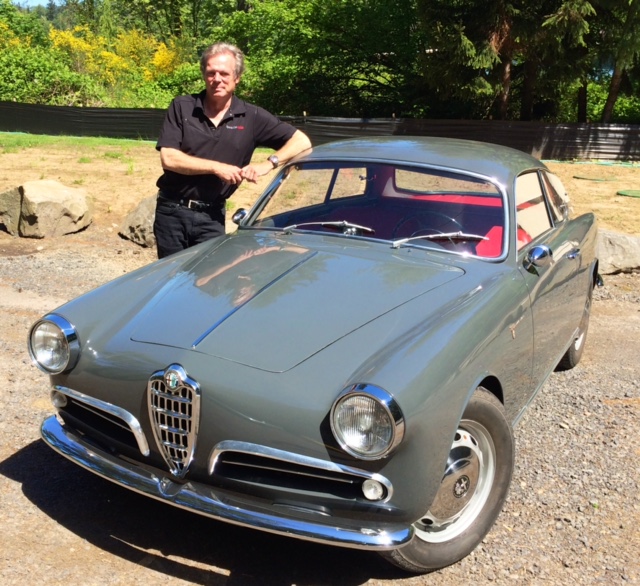
A friend is driving his 1958 MGA on the upcoming SCM 1000. The route will take us over Mt. Hood, to Crater Lake and to other scenic destinations with plenty of elevation changes.
“The brake drums and shoes on my car are tiny. I think I better upgrade to front discs.”
“Why bother,” was my response. “Are you planning on going racing?”
Over the half-century I have owned classic sports cars (they weren’t so classic in 1960), I have fiddled around with upgrades to the engines, transmissions, rear ends, brakes, suspensions and ignition systems.
When these cars were in daily use, some of these upgrades made sense for reliability. And when I would regularly autocross them in parking lots, the improvements made a difference in my results.
But those were different times.
Today, none of our classic cars are used on a daily basis (or shouldn’t be, for safety reasons if for no others). We drive them a few thousand miles a year, primarily on pleasant tours on fun roads. We keep them in garages, some even climate-controlled. We have all spent exorbitant amounts of money replacing worn out parts and getting our cars to drive pretty much like they did when they were new.
I suggest you stop and examine whether the upgrades you are considering are necessary, and if they will do more to alter the nature of the car than they will offer in improvements.
As far as the drum-to-disc conversion, my advice is to simply drive the car to suit the brakes you have. When these cars were new, people didn’t go careening off of cliffs because their car had drum brakes.
Yes, they faded. And they had minimal stopping power. But you simply drove the car to accommodate its limitations.
One of the great mistakes new collectors make is to think that an MGA is really a Miata with a swoopy body. They have no idea just how terrible the car is to drive compared to a modern car.
That doesn’t mean it isn’t fun, it just means you have to be a different, more thoughtful kind of driver. If you assume that everyone else on the road – texting from behind the wheel of their three-ton pickups – wouldn’t notice if they ran over your Bugeye, you probably wouldn’t be wrong.
As far as modifications, given the relaxed touring that we now do with these cars, I see no need for bigger brakes, braided steel brake lines (if the rubber ones are in good condition), electronic ignition (if your stock system is working), or fatter tires.
In fact, most of us have figured out by now that these cars handle and steer better with their skinny stock tires than they do with more modern, fatter, lower-profile tires.
There are a few modifications that make sense. If you can install three-point retractable seatbelts, you are a fool not to.
Upgraded LED headlights are a real plus. I found this out when driving my SIII Jag coupe home from the Oregon coast, at night on a curving two-lane road. I couldn’t see a thing. But $600 later my problem was solved.
We could have an interesting discussion about suspensions. Let’s assume you need to replace your shocks and bushings anyway. In that case, I would go to upgraded shocks, a thicker front sway bar and a slightly shorter and stiffer shock.
For me, it simply makes the car more fun to drive without altering its essential characteristics. But you may feel differently.
As the 1300-, 1600-, 1750- and 2000-cc Alfa engines interchange relatively simply, the tendency has always been to go for a bigger engine.
Why, I ask? Are you competing in the Targa Florio? I have a friend with a later Super and a 1300-cc engine. It keeps up with freeway traffic and is fun to row through the gears.
When our 1967 Giulia Super arrived, it was fitted with a 2-liter engine. I wouldn’t have put one in myself, but having the extra torque was pleasant. However, I think my friend has more fun with his 1300-cc car.
While restoring our 1958 Sprint Veloce, I was told more than once how much simpler it would be to put a 1750 engine in it rather than deal with the mysteries of the original 750-series Veloce engine.
But I preferred to experience the unique feel and sensations of the original 1958 engine than replace it with a more modern powerplant.
Also, don’t forget that each thing you change introduces one more thing to fail. Our recently departed Volvo 122S kept dying on the freeway without warning. It took hundreds of dollars in searching to discover that when someone had “upgraded” the car to an electronic ignition, they had made a faulty splice in the wiring harness that was shorting out intermittently.
If your distributor and all your electrical components are in good shape and properly set up, there is no reason to alter them.
My final word on this is that if a car comes to you with upgrades installed, I would accept then and enjoy the altered characteristics of the car. Our 1967 GTV came with a 1750 engine installed rather than the stock 1600-cc. I was not about to change it back.
But if it is stock, think carefully before you start to change the character of the car.
I would rather see you adapt your driving style to the car, than adapt the car.
I look forward to seeing the drum-braked MGA crossing and re-crossing the Cascades on the SCM 1000.
-
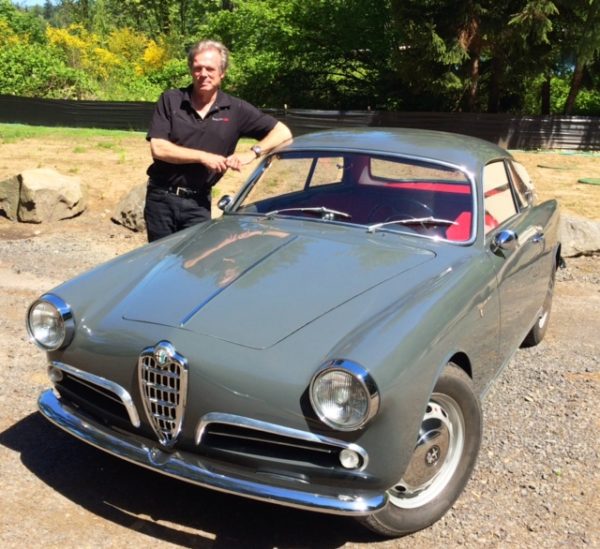
I preferred to keep the 1300cc engine in the 1958 Sprint Veloce -
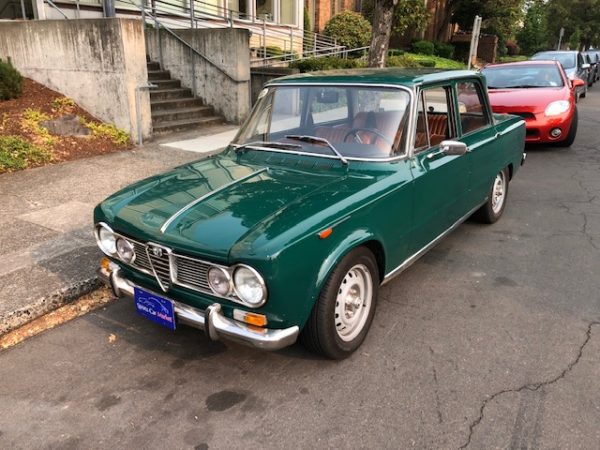
The Super had an upgraded 2000cc engine -
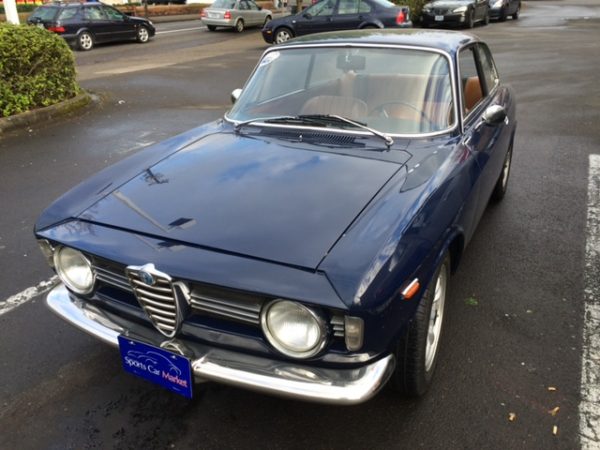
Previous owner installed a 1750 engine. I wasn’t going to change it back. -
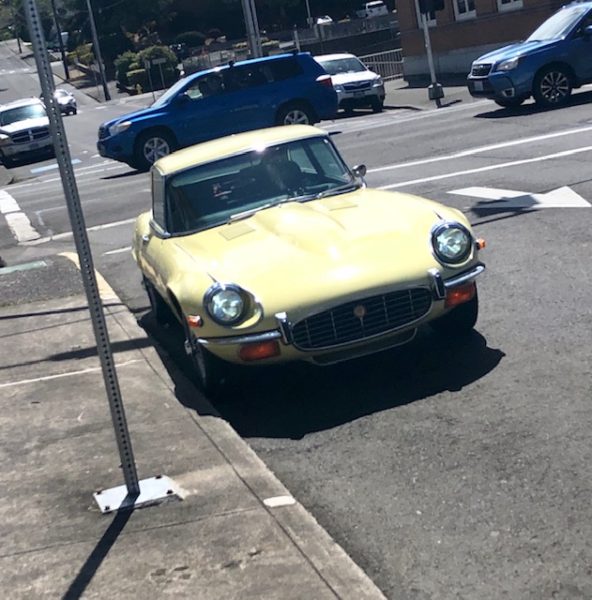
Upgraded LED headlights on the 1971 Jag -
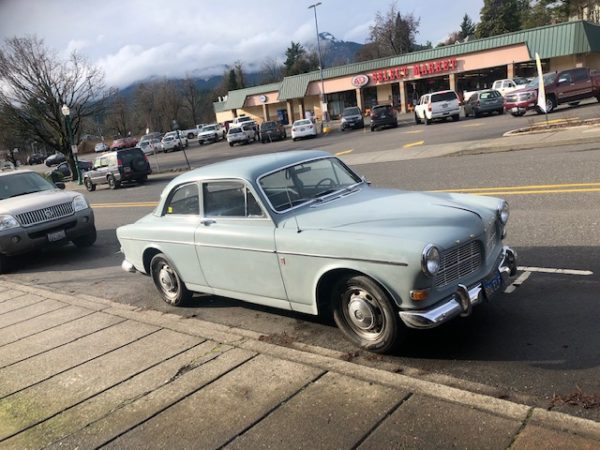
Volvo 122S benefited from mild suspension enhancements
Mostly agreed, but “adapting your driving style to the car” only goes so far. My Series 1 E-Type, like all of them, was prone to overheating (likely cured on your S3). 50 years ago, I could handle it by driving at night on long trips, and being careful when going to the grocery store in early morning or late afternoon, though never, ever in Sacramento.
But today, I’m 50 years older, and I want to tour the wine country with my honey and not boil over in Domaine Serene’s lovely parking lot as we watch in sweat-stained clothes. Making the change to a modern cooling system just made sense.
And when I needed a new starter, I chose a modern high torque model. Why the heck not?
And those porcelain coated exhaust manifolds lasted about 50 miles before flaking off in the garage. So it made sense to go to a modern ceramic coating. And they look great.
I have all the parts should a future owner want go back in time to an era where overheating in a car with flakey exhaust manifolds and a part-time starter was acceptable. But why would they?
Keith, I couldn’t agree more. I have a ’57 Morris Minor 4 – door sedan. We brought it home with us from a two-year job stint in Australia. When in Australia I took the opportunity to grab the complete front (drum) brakes from a Wolseley 1500. Still drums, but HUGE compared to the stock 6″ ones on a Morris. And they bolt right on. I can’t get them to fade – at least not on my usual hilly, curvy test routes. But I still have the original 948cc engine and the smooth case gearbox – both of which many “experts” say are weak and not worth keeping. Interestingly, the 948 revs like a demon, doesn’t smoke and leaks just enough to confirm that it’s a British design. The “weak” smooth-case gearbox is smooth and silent in operation, doesn’t jump out of gear no matter what the RPMs are on the downshift, and seems to have a pretty high percentage of her synchromesh left (top three gears only). She’s almost 65 years old and we are only the second family to be her custodians. If the whole drivetrain blew up tomorrow – could I really complain?
And, with intelligent use of the vehicles gearing, and speed, excessive braking can be moderated. You distinctively know by the smell of “cooking ” brake shoes from that vintage classic in front of you cascading down the grade its drive is clearly not paying attention.
My (also departed) Giulietta Sprint with the original 1300cc engine and Solex carb (oh the horror!) In tune could more than keep up with many a Giulia 1600 with Webers in shall we say “questionable” states of tune.
Great article as usual, probably because I agree with your points LOL! I have a ‘57 MGA that a previous owner (30 years ago) repowered with a ‘76 Toyota SR20, points and all, although hideously overcarbureted with a pair of 40DCOE Webers. Toyota 5 speed too- stock exhaust aft of the header sounds right, and we cruise all over the Northwest and Canada at 70mph, drum brakes and all…lovely.
Great advice and I agree completely! But, I would defend any owner for doing whatever he/she wants with the car. It’s their car and they can do with it as they wish despite whatever others may think.
My (also departed) Giulietta Sprint with the original 1300cc engine and Solex carb (oh the horror!) In tune could more than keep up with many a Giulia 1600 with Webers in shall we say “questionable” states of tune.
All true! My Series Land Rover taught me this. Once I accepted it for what it is, joy in driving it amplified.